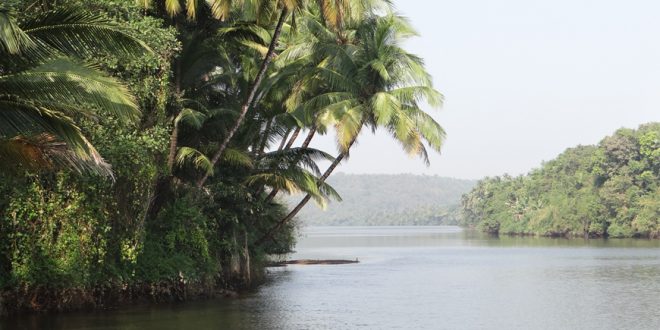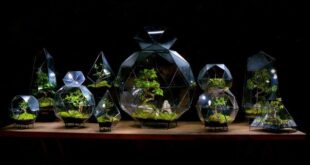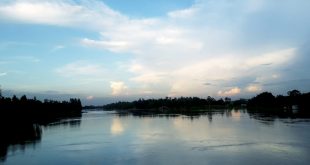Water: Water is a transparent and nearly colorless chemical substance that is the main constitute of Earth’s streams, lakes, oceans and the fluids of most living organisms.
Resource: A resource is any physical material constituting part of Earth that people need and have value. Natural materials become resource when humans value them.
Importance of water resource
Best safe and secure cloud storage with password protection
Get Envato Elements, Prime Video, Hotstar and Netflix For Free
Best Money Earning Website 100$ Day
#1 Top ranking article submission website
- Water is needed by every organism. It is required for all living functions
- Water makes up to 70% of an adult’s total body weight
- It is essential for agriculture, production and processing of food
- Essential for processing of many raw materials
- Essential for the construction of many products.
Problems related to water supplies
There are two major problems related to water
supply. These are as follows:
1. Shortage of water
2. Flooding.
Shortage of Water
Causes of shortage of water
Waters shortages are brought about by a complex set of factors including
- Drought (A drought technically exists when rainfall is 70% below average for 21 days or longer)
- Overuse
- Waste and
- Over population
Impacts of shortage of fresh water
- Creates conflicts among water users,
- Severe economic impacts, especially among farmers.
- Ground water depletion may also cause saltwater intrusion in coastal zones or in regions where freshwater aquifers lie near saltwater aquifers.
- In some regions, groundwater overdraft has caused severe subsidence or sinking of the land resulting in the collapse of highways, homes, factories, pipelines and canals.
A severe drought results in
- a decrease in stream flow,
- a drop in the water table,
- a loss of agricultural crops,
- a loss of wildlife especially aquatic organism
- a drop in the levels of lakes, stream and reservoirs,
- an increase number of forest fires and considerable human discomfort.
Solution to water shortage
A. Technical solutions
1. Construction of Dams and Reservoirs
Advantages
- Some good news is that world ́s dams have increased the annual reliable runoff available for human use by nearly one-thirds.
Disadvantages
- A series of dams on a river, especially in arid areas, can reduce downstream flow.
- More than 24% of world ́s freshwater fish species are threatened or endangered, primarily due to dams and reservoirs that have destroyed many free-flowing rivers.
- Displaces people, flooded large areas of croplands and forests,
- Increases saltwater intrusion,
- Reduce deposits of nutrients-rich sediments below the dams,
- Disrupts migration of fish
- High cost.
Water reservoir projects
- Tunnels, aquaducts, and underground pipes can transfer stream runoff collected by dams and reservoirs from water-rich areas to water-poor areas.
- Although such transfer can bring water to water-short areas, they also create environmental problems.
- An example is the shrinking of Aral Sea. The world ́s largest irrigation canal, stretches over 1300 km in an area of former Soviet Union and transfers water from Aral Sea and its two feeder rivers.
- This large-scale water diversion coupled with drought and high evaporation rates caused a regional ecological, economic and health disasters.
- The sea ́s salinity is tripled, its surface area has decreased by 54% and its volume has decreased by 75%.
- Water withdrawal has also reduced the sea ́s two supply rivers to mere trickles.
- This process has converted about 36,000 square kilometers of former lake bottom to a human made desert covered with glistering white salt.
- Increased salt concentration has resulted in extinction of 20 of Aral ́s 24 native fish species and has devastated areas fishing industry which once provided work for more than 60,000 people.
- Salt dust is picked up by wind as far as 300 km away. It pollutes water and kills wildlife, crops, other vegetation. Aral Sea dust setting on glaciers in the Himalayas is causing them to melt at a faster rate.
- Groundwater and surface water pollution have increased. To raise yields, farmers have used increased amount of herbicides, insecticides, fertilizers that contaminated the groundwater, the major source of drinking water.
- Areas ́s climate has been changed. The sea was acting thermal buffer that moderate the heat summer and the extreme cold of winter. Now, there is less rain, summers are hotter and drier, winters are colder and growing season is shorter, 20% of crop yields has been reduced.
2. Withdrawing groundwater
- 1/4th of the world ́s people get drinking water from aquifers.
- In Bangladesh, about 75% of cultivated land is irrigated by groundwater and 25% by surface water.
- Of the abstracted groundwater about 70-90% is used for agriculture and the rest for drinking and other water supplies.
- In rural areas, groundwater provides about 94.3% of drinking water by tubewells.
- In USA, 51% of drinking water and 43% of irrigation water comes from water pumped from aquifer.
Advantages
- Aquifers are widely available.
- They are also reversible sources
- Aquifers do not become easily contaminated
- No evaporation losses
- Cheaper to extract than most surface waters
Disadvantages
- Water tables are falling as the rate of water pumping exceeds the rate of recharge from precipitation
- Sinking of lands/subsidence when water is removed
- Polluted aquifers are unsuitable for decades or centuries because they are not easily treated
- Salt water intrusion occurs near coastal areas
3. Desalination
Desalination involves removing dissolved salts from ocean water or from brakish groundwater.
There are 2 methods of destination:

- Distillation and
- Reverse osmosis.
Disadvantages
- It is expensive because it takes large amounts of energy.
- Desalination produces large quantities of wastewater(brine) containing high levels of salts and minerals. Dumping brine into nearby coastal areas increases salinity.
4. Making water from air
- A turbine generator is used.
- It forces air through heat exchangers, where the air is cooled by ammonia compressors, it forms droplets of water.
- The technology requires wind, at least 10oC and humidity of around 10%.
- Can be used through most of the year in the many countries where water is scarce.
- The system is expensive.
- Made by Dutch company
5. Use of machineries efficient in water use
a. Water Less fracking
- Hydraulic fracturing requires a lot of water. Water less fracking should be used.
b. The waterless toilet
- Toilet has not changed much since the first flush toilet patent was issued in 1775. But the waterless toilet is on its way.
c. The almost waterless washing machine:
- A British company called Xerose made an automatic washing machine with technology that uses thousands of polymer beads to remove stains from clothes. The molecular structure of the beads combines with detergent to attract dirt. They can be used for hundreds of washes before being recycled.
d. Smart irrigation
- Flood irrigation — remains in widespread use. It involves pumping or diverting water to fields so it flows along the ground among the crops. It is simple and cheap, but inefficient and wasteful.
- Smart irrigation allows a farmer to irrigate with much more precision and less waste.
6. Shipping water
- If there is no water, then idea of shipping water from soggy countries to parched ones sounds like an obvious solution to water scarcity.
- Now an Icelandic company, Bruarfoss, claims to create a new global export industry
- It is now working on a plan to deliver glacial spring water from Iceland in supertankers that can carry up to 180,000 tonnes at a time.
B. Low-tech traditional methods
1. Rainwater harvesting
- It is the accumulation and deposition of rainwater for reuse on-site, rather than allowing it to run off.
- Its uses include water for garden, livestock, irrigation, and domestic use with proper treatment etc.
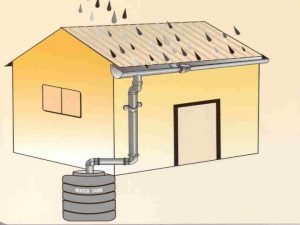
2. Dug well
- Dug wells are holes in the ground dug by shovel.
- Typically, they are only 10-30 feet deep.
- Being so shallow, dug wells have the highest risk of becoming contaminated.
C. Cultural and legal controls
- People should be aware of the value of water as an important and precise resource
- Water should not be used lavishly
- All kinds of misuse should be avoided
- Improve water distribution and management system
- There should be legal framework on water use
- Laws should be implemented strictly
| Small actions like turning off the taps during washing up could save a considerable amount of water. (Source of the image: nicolas_ / Getty Images) | Water meters have been fitted in all new homes since 1990 | Millions in south and eastern England are facing hosepipe bans. |
 |
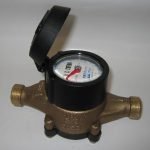 |
 |
Flood
Causes of floods
- Heavy rainfall: Volume, spatial distribution, intensity and duration of rainfall over a catchment
- Rapid melting ofsnow
- Storm surge associated with a tropical cyclone, a tsunami or a high tide coinciding with higher than normal river levels
- Topography, Ground cover, reduced wetlands, catchment and weather conditions prior to a rainfall event.
- Breaking of dams.
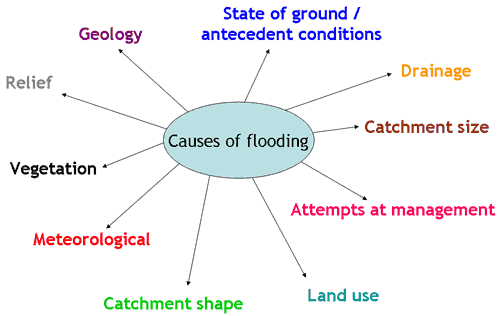
Effects of flooding
- Bangladesh is one the countries with a unique settings for flooding.
- 80% of the landmass is flood plain leaving the country highly vulnerable to the threat of repeated floods.
- During past 50 years, at least 7 major floods have taken place in Bangladesh.
- In each of them 30% or more of the landmass were flooded.
- Between 1985-2001, floods prematurely killed about 300,000 people, 96% of them in developing countries.
Effects of flooding on people are:
i) demographic
Ii) economic
iii) social
How to reduce flood risks
- Straighten and deepen river (channelization, excavation)
- Building levees
- Building dams
- Construct a floodway that allow floodwater to flow.
- Identify and manage flood-prone areas (prohibit building and certain types of activities that are in high risk flood zones)
- Prevention or precautionary measure (develop early alarming system)
The Global Picture
Virtually every nation in the world faces water shortage. Hard hit areas are most affected where water is far away from villages and is often polluted. Three out of every five people in the developing nations do not have access to the clean and disease free drinking water. According to WHO, 80% of all disease in these countries results from the contaminated water they drink and bath in.
Many countries are engaged in bitter rivalries over this precious resource. Bangladesh and India, India and Pakistan have conflicts from the Ganges and Indus, respectively. Argentina and Brazil disputes each other claim to the La Plata River. Mexico and the United States have come in conflict over the Colorado River.
There are over 150 river basins shared by two or more countries.

Figure shows the projected water withdrawals throughout the world in terms of total annual runoff. The horizontal bars on the left indicate 10% and 20% of the runoff, which is economically feasible for most countries to withdraw.
As these graphs show Africa and Asia will require large withdrawal to meet their projected needs far in excess of the stable runoff (the amount of the total runoff that can be accounted on from year to year).
In most countries, stable runoff is about 30% to 40% of the total average runoff. If a country’s demand exceeds the stable runoff, extreme water shortages can occur in dry or even moderately dry years.
Note
This article is in the preliminary stage. Hope to develop it soon.
 Plantlet The Blogging Platform of Department of Botany, University of Dhaka
Plantlet The Blogging Platform of Department of Botany, University of Dhaka
